10 BEST places to visit in Mexico in July
- Our Hidden Earth

- Jul 24
- 11 min read
Updated: Aug 10
Mexico in July is vibrant, colourful, and bursting with energy.
While it's the rainy season in many areas, most showers are short and refreshing, leaving plenty of time to explore ancient ruins, stunning coastlines, cool mountain towns, and cultural festivals.
Whether you’re looking for beach days, jungle adventures, or colonial charm, July offers great value, fewer crowds, and lush, green landscapes.
Here are the 10 best places to visit in Mexico in July for travellers who want the perfect mix of culture, nature, and relaxation.

1) Mexico City (CDMX)
Mexico City is a cultural giant, offering world-class museums, street food, historic architecture, and vibrant neighbourhoods. In July, the weather is mild, with light afternoon showers and cooler evenings, perfect for exploring the city without the blazing heat.
The green spaces like Chapultepec Park and canals of Xochimilco feel fresh and lively after a summer rain. Museums such as the National Museum of Anthropology or Frida Kahlo’s Casa Azul offer indoor escapes when the skies turn grey. July also brings cultural festivals, food fairs, and fewer crowds than peak tourist seasons.
The neighbourhoods of Roma and Condesa are great for boutique shopping, art galleries, and cafés. Traditional dishes like tamales, tacos al pastor, and mole taste even better with a local mezcal or fresh agua fresca.
Street performers and markets come alive in the evenings, especially around the Zócalo and Coyoacán. It’s a perfect time to experience the capital like a local. Mexico City in July is cosmopolitan, cultural, and full of surprises.
FAQs/Things to know before visiting Mexico City (CDMX)
1) Does it rain all day in Mexico City in July?
No, most rain comes in the late afternoon or evening and usually doesn’t last long. Mornings and early afternoons are generally dry and great for sightseeing.
2) Is Mexico City safe for tourists?
Yes, especially in central and popular areas like Polanco, Roma, and Coyoacán. Like any large city, stay alert, avoid walking alone late at night, and use official taxis or rideshare apps.
3) What’s the best way to get around?
The metro is cheap and efficient, though crowded at times. Taxis and Uber are widely available, and walking is enjoyable in many central neighbourhoods.
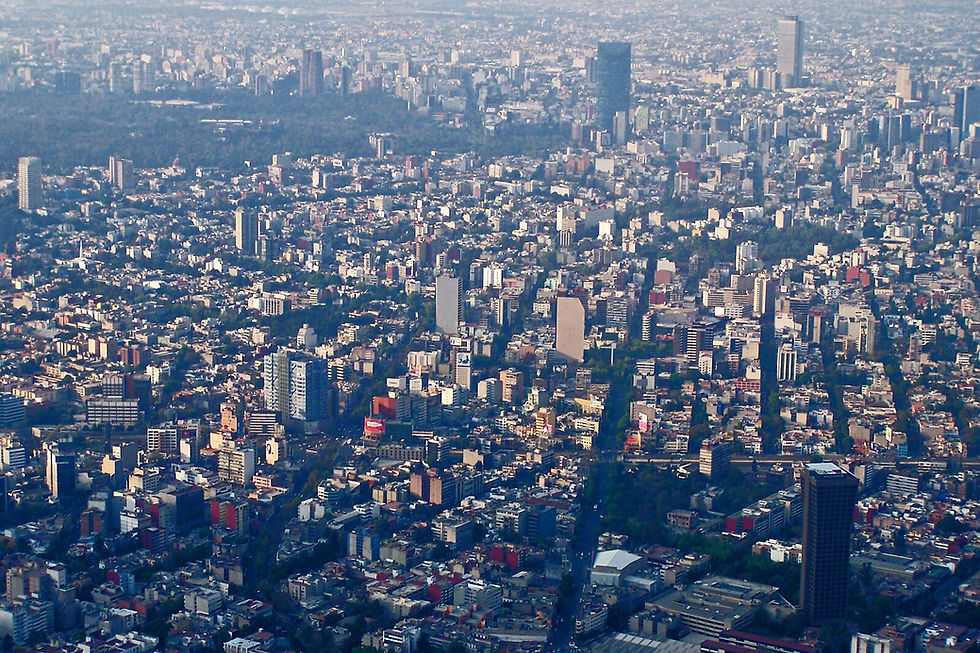
2) Oaxaca City, Oaxaca
Oaxaca City is a cultural treasure in southern Mexico, famous for its art, food, and Indigenous traditions. July is one of the best times to visit because of Guelaguetza, a world-renowned festival of dance, music, and vibrant costumes held mid-month.
The city streets come alive with parades, fireworks, and traditional markets selling everything from woven rugs to hand-carved alebrijes. Though it’s the rainy season, most showers are light and fall in the evening, making the days perfect for exploring.
Walk through the colonial centre, visit Santo Domingo Church, and relax in rooftop cafés overlooking the mountains. Oaxaca’s cuisine shines year-round, but in July you’ll also find special seasonal dishes at food festivals and pop-ups.
Mole, tlayudas, and mezcal tastings are musts for foodies. Day trips to nearby villages like Teotitlán del Valle or to Monte Albán ruins are even more beautiful when the valley is lush and green.
FAQs/Things to know before visiting Oaxaca City, Oaxaca
1) What is the Guelaguetza Festival?
It’s one of Mexico’s most important cultural events, celebrating the Indigenous cultures of Oaxaca through dance, music, and traditional dress. It’s held on the last two Mondays of July, drawing performers from all over the state.
2) Is Oaxaca safe for tourists?
Yes, Oaxaca is considered one of Mexico’s safest cities. Stick to well-lit areas, avoid rural roads at night, and take normal travel precautions.
3) How do I get to Oaxaca?
You can fly directly into Oaxaca International Airport or take a bus from Mexico City (approx. 6–7 hours). Flights are more convenient, especially during festival season.
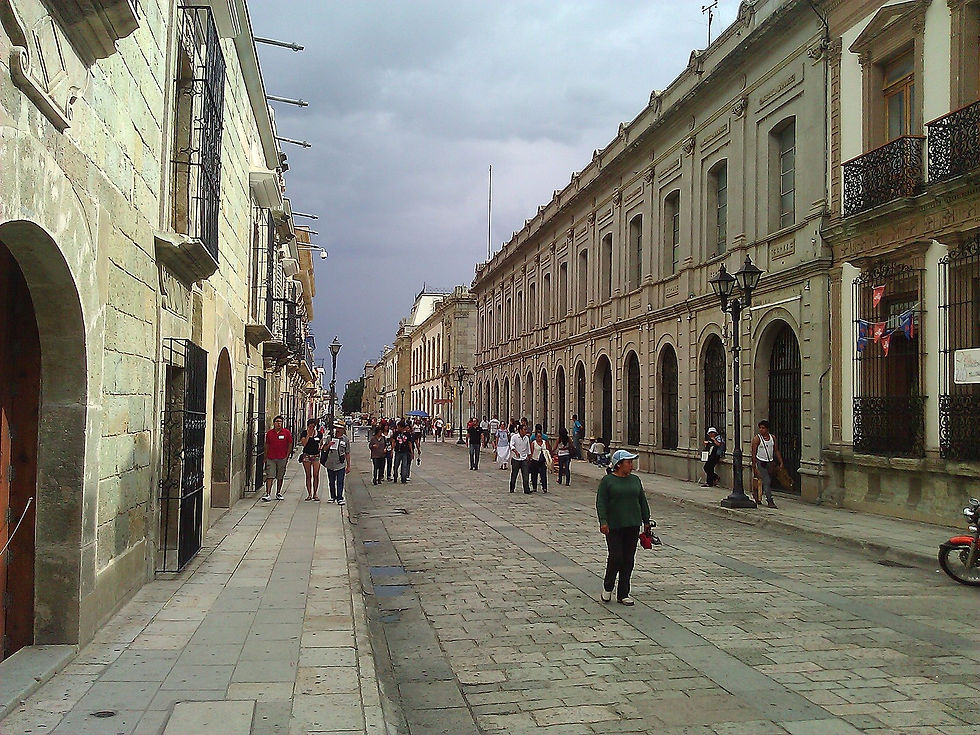
3) San Cristóbal de las Casas, Chiapas
San Cristóbal de las Casas is a cool, highland town in Chiapas surrounded by forested mountains and rich Indigenous heritage. In July, the region enjoys crisp air, short rain showers, and an incredibly green landscape that makes exploring a joy.
The town itself has colourful houses, cobbled streets, and a laid-back feel that draws artists, writers, and travellers from all over the world.
The local markets are full of textiles, amber, and handmade jewellery, while nearby villages like San Juan Chamula offer deep cultural insight. You can sip hot chocolate or Chiapas-grown coffee in a cosy café while the rain patters outside.
Visit museums, take Spanish classes, or trek to nearby waterfalls like El Chiflón or Misol-Ha, which are particularly stunning in the rainy season. San Cristóbal’s cool climate is a refreshing escape from the coastal heat of other parts of Mexico.
FAQs/Things to know before visiting San Cristóbal de las Casas, Chiapas
1) Does it rain a lot in San Cristóbal in July?
There are usually light showers, mostly in the late afternoon or evening. Mornings are often sunny, and the rain helps keep the air fresh and clean.
2) Is it a good destination for solo travellers?
Yes, it's popular with solo backpackers and remote workers. There’s a strong expat and traveller community, and the town is walkable and welcoming.
3) Can I explore nearby nature during July?
Definitely. Waterfalls and rivers are at their best, and hiking trails are open — just wear sturdy shoes and be cautious on slippery paths.

4) Guanajuato City, Guanajuato
Guanajuato City is a vibrant, colonial-era city tucked into a mountain valley, with winding alleyways, colourful buildings, and a rich artistic vibe. In July, it’s warm and lively, with greenery all around and a packed calendar of cultural events.
The city’s unique tunnel roadways, pedestrian-only alleys, and hillside views make it feel like a European town with a Mexican heart.
You can visit museums dedicated to Diego Rivera and Don Quixote, stroll through charming plazas, and catch live music on almost every corner.
The city is also famous for its legends and ghost stories, which come alive on evening callejoneadas (musical walking tours). July offers fewer tourists than festival season in October, giving you better hotel rates and quieter streets. Cafés, rooftop bars, and balcony restaurants are great for watching the sunset over the colourful skyline.
FAQs/Things to know before visiting Guanajuato City, Guanajuato
1) Is Guanajuato walkable?
Yes, most of the historic centre is pedestrian-friendly. Be ready for hills and steps — comfortable shoes are a must.
2) Is July a good time to avoid crowds?
Yes, July is quieter than the October Cervantino Festival season, making it a more relaxed time to explore. The city feels lively without being overcrowded.
3) How do I get to Guanajuato?
You can fly into Bajío International Airport (BJX) and take a 30-minute taxi into town. Buses from Mexico City or Guadalajara are also reliable options.

5) Tulum, Quintana Roo
Tulum is a trendy coastal town on the Caribbean Sea, known for its boho vibe, turquoise waters, and beachfront ruins. In July, it’s warm and humid with occasional tropical showers, but that means lush jungle surroundings and quieter beaches.
The Tulum ruins overlooking the sea are spectacular in the soft morning light, and the nearby cenotes are perfect for cooling off after a hike. Many travellers use July as a time to enjoy Tulum’s world-class spas, yoga retreats, and boutique eco-resorts at lower prices than the high season.
Despite the rains, the water remains warm and the beaches are still swimmable most days. The surrounding Sian Ka’an Biosphere is especially lush and vibrant in summer, great for kayaking or nature tours.
The town has a mix of rustic taquerías and upscale dining spots, with live music and cocktails under palm trees in the evening. Locals are welcoming, and the pace is slower in the off-season. Tulum in July is tropical, laid-back, and perfect for relaxed beach lovers.
FAQs/Things to know before visiting Tulum, Quintana Roo
1) Is July hurricane season in Tulum?
Yes, it falls within hurricane season, but major storms are rare. Rain usually comes in short bursts, and the area is well-prepared in case of weather alerts.
2) Are cenotes open in July?
Absolutely. In fact, the rain fills them with fresh water, making them ideal for swimming, snorkelling, and cooling down in the heat.
3) Can I still enjoy the beach in July?
Yes, most days are sunny or partly cloudy. Just check for sargassum seaweed reports, as it can occasionally affect beach conditions during summer.

6) Isla Holbox, Quintana Roo
Isla Holbox is a peaceful island just north of the Yucatán Peninsula, famous for its car-free streets, colourful murals, and bioluminescent beaches. July is one of the best times to visit because it's whale shark season, you can swim with these gentle giants in the surrounding waters.
The island has a relaxed vibe with sandy roads, hammocks over the sea, and fresh seafood served beachside. Rain showers are common in the afternoon but rarely last long and help cool down the warm tropical air.
Evenings are beautiful, with sunsets that paint the sky in pink and orange, and fireflies dancing through the mangroves.
You can take boat tours through flamingo-filled lagoons, kayak through mangrove tunnels, or simply relax by the beach with a cold drink. Golf carts replace cars here, adding to the island’s charm and slow pace.
FAQs/Things to know before visiting Isla Holbox, Quintana Roo
1) How do I get to Isla Holbox?
Take a bus or car to Chiquilá, then a 20-minute ferry to the island. From Cancún, the full journey takes around 2 to 3 hours total.
2) Can I swim with whale sharks in July?
Yes, July is peak whale shark season. Tours are regulated for safety and conservation, and it’s an unforgettable experience.
3) Is the rain a problem in Holbox during July?
Not usually. Rain comes in brief tropical bursts, mostly in the evening or night, and the island is still enjoyable throughout the day.

7) Puebla City, Puebla
Puebla is a colonial gem located southeast of Mexico City, known for its historic architecture, rich food culture, and colourful tiled buildings. In July, the city is cooler than other parts of Mexico and offers a beautiful mix of sunshine and refreshing afternoon rains.
The historic centre, a UNESCO World Heritage Site, is perfect for exploring on foot with its churches, plazas, and charming cafés.
You can visit the Puebla Cathedral, the colourful Callejón de los Sapos, and the Talavera pottery workshops that have operated for generations.
Food lovers will be in heaven here, Puebla is the birthplace of mole poblano, chiles en nogada, and cemitas. July marks the early season for chiles en nogada, one of Mexico’s most iconic seasonal dishes. Museums like the Amparo and the International Baroque Museum offer rich cultural experiences for rainy moments.
FAQs/Things to know before visiting Puebla City, Puebla
1) Is July a good month for food in Puebla?
Yes, it’s the start of the chiles en nogada season and a great time for mole, tamales, and sweet pastries. The rain also brings fresh produce to local markets.
2) Is Puebla safe for travellers?
Puebla is considered one of Mexico’s safer cities. Stick to central areas, avoid isolated places at night, and take basic travel precautions.
3) Can I combine a trip to Puebla with Mexico City?
Absolutely. It's only about 2 hours by car or bus from Mexico City, making it a perfect weekend trip or cultural stopover.

8) Campeche City, Campeche
Campeche is a colourful, coastal city on the Gulf of Mexico that’s often overlooked, but it’s one of the best-preserved colonial cities in the country. In July, it’s warm and humid with afternoon rains that refresh the air and make the streets shine with colour.
The walled historic centre is painted in bright pastels, with cobbled streets, restored mansions, and quiet plazas that feel like stepping back in time.
You can walk along the ancient city walls, visit the San Miguel Fort, and explore Mayan ruins nearby like Edzná.
The waterfront malecón is perfect for evening strolls, especially as the sun sets over the sea. July brings local celebrations and a slower pace, with fewer tourists and more space to enjoy.
FAQs/Things to know before visiting Campeche City, Campeche
1) Is Campeche good to visit in summer?
Yes, it’s quieter and cooler than much of the Yucatán. Occasional rain keeps the city lush and adds a romantic feel to its colonial streets.
2) What’s unique about Campeche compared to other colonial cities?
It’s the only walled city in Mexico and one of the best-kept historic centres in Latin America. Its coastal location adds a relaxing, tropical twist to the experience.
3) How do I get to Campeche?
Fly into Campeche International Airport or drive from Mérida (about 2 hours). It’s also a great stop on a longer Yucatán road trip.
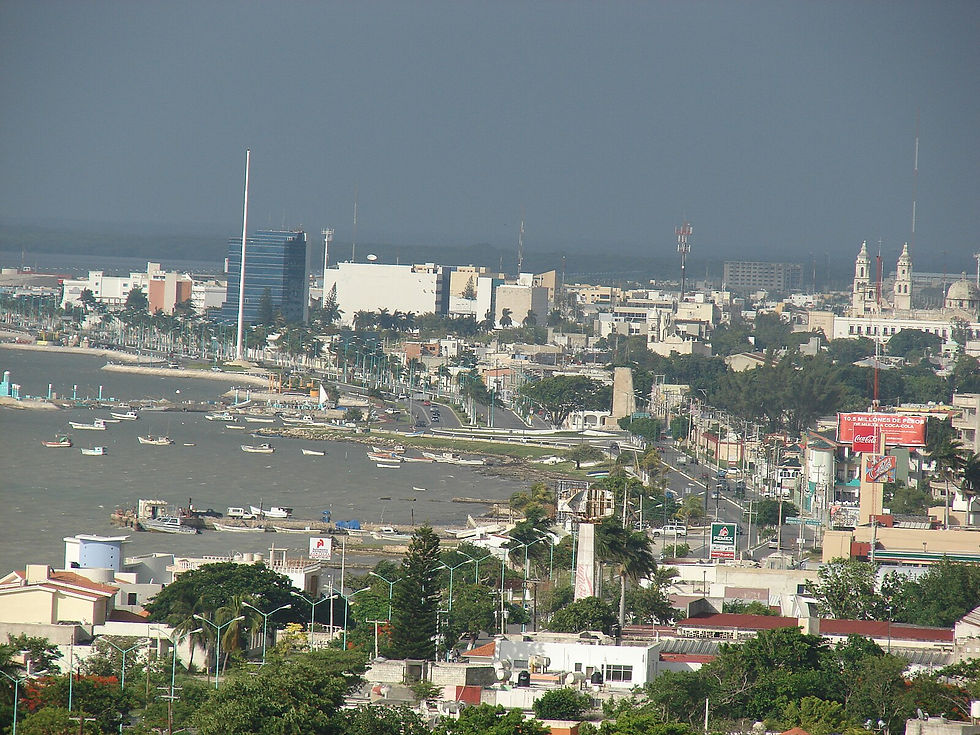
9) Palenque, Chiapas
Palenque is home to one of Mexico’s most awe-inspiring ancient ruins, surrounded by dense jungle and hidden waterfalls. In July, the forest is at its greenest, and the sound of howler monkeys and tropical birds fills the air.
The Palenque archaeological site is often shrouded in mist after a morning rain, making it feel even more mystical and otherworldly. Fewer tourists visit in summer, so you can often explore the temples and pyramids in peace.
Nearby, you’ll find spectacular natural spots like Misol-Ha and Agua Azul waterfalls, both powerful and full thanks to the rain. The small town of Palenque has budget-friendly stays and rustic jungle lodges that offer an immersive nature experience.
Local guides provide insightful tours that mix Mayan history with rainforest ecology. Warm nights, cooling rains, and a soundtrack of wildlife make this a truly magical escape. Palenque in July is mysterious, wild, and deeply atmospheric.
FAQs/Things to know before visiting Palenque, Chiapas
1) Is Palenque accessible during the rainy season?
Yes, roads and sites remain open, though it’s smart to check local conditions if travelling during a storm. The jungle thrives in July, making it a beautiful time to visit.
2) Are the waterfalls safe to visit in July?
Most are, but currents can be stronger than in the dry season. Always follow local advice and avoid swimming if water levels are too high.
3) Is there accommodation near the ruins?
Yes, you’ll find everything from jungle cabins to boutique hotels close to the archaeological zone. Many places offer shuttle service and nature tours.
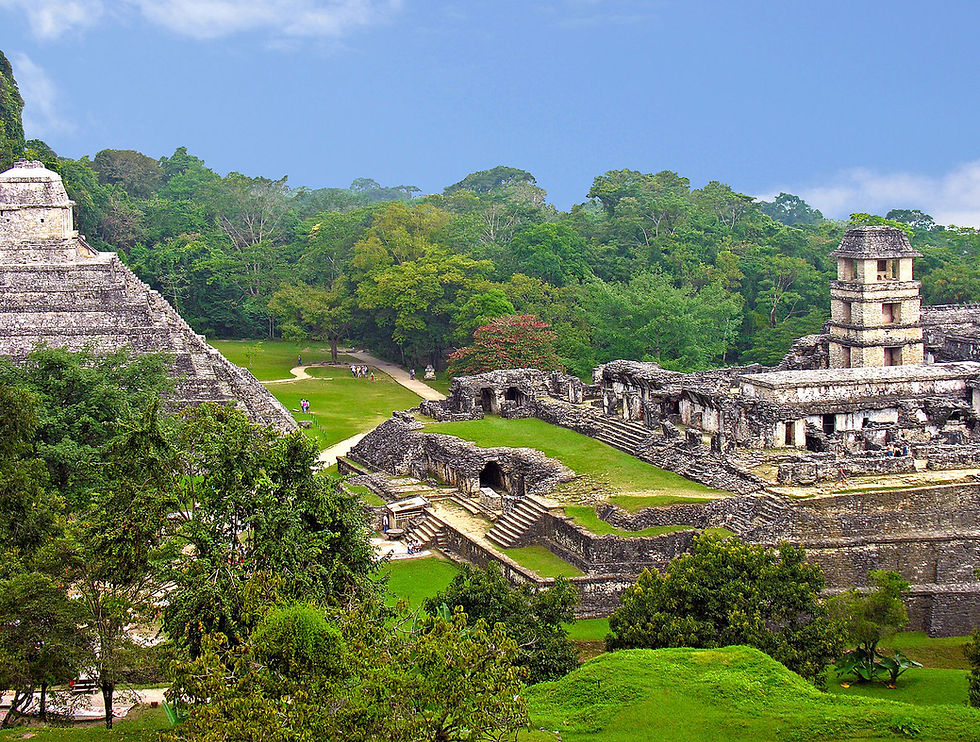
10) Puerto Escondido, Oaxaca
Puerto Escondido is a relaxed surf town on Oaxaca’s Pacific Coast, known for its golden beaches, surf breaks, and laid-back culture. July brings warm weather and big waves, drawing surfers from around the world, especially to the legendary Zicatela Beach.
While the sea can be rough for swimming in some areas, beaches like Carrizalillo and Manzanillo are calmer and great for a dip. Rain showers are typical in the evening or early morning, but the days are mostly sunny and lively. It’s also turtle hatching season, and you might witness baby turtles being released into the sea.
Local food is fantastic, think grilled fish, tlayudas, and fresh coconut water on the sand. The nightlife here is mellow but fun, with beach bars, bonfires, and live music.
You can also take boat tours to see dolphins and whales or explore the nearby bioluminescent lagoon. Puerto Escondido in July is surfy, sunny, and full of natural wonders.
FAQs/Things to know before visiting Puerto Escondido, Oaxaca
1) Is Puerto Escondido good for non-surfers?
Yes, there are beaches suitable for swimming, yoga retreats, food tours, and eco-adventures. It’s a well-rounded destination, even if you never touch a surfboard.
2) What’s the weather like in July?
Hot and humid with short tropical rains, most of the day is sunny. Sunsets are dramatic, especially when viewed from cliffside restaurants.
3) Is Puerto Escondido easy to reach?
You can fly into Puerto Escondido Airport from Mexico City. It's also accessible by road from Oaxaca City, though the journey is long and winding.
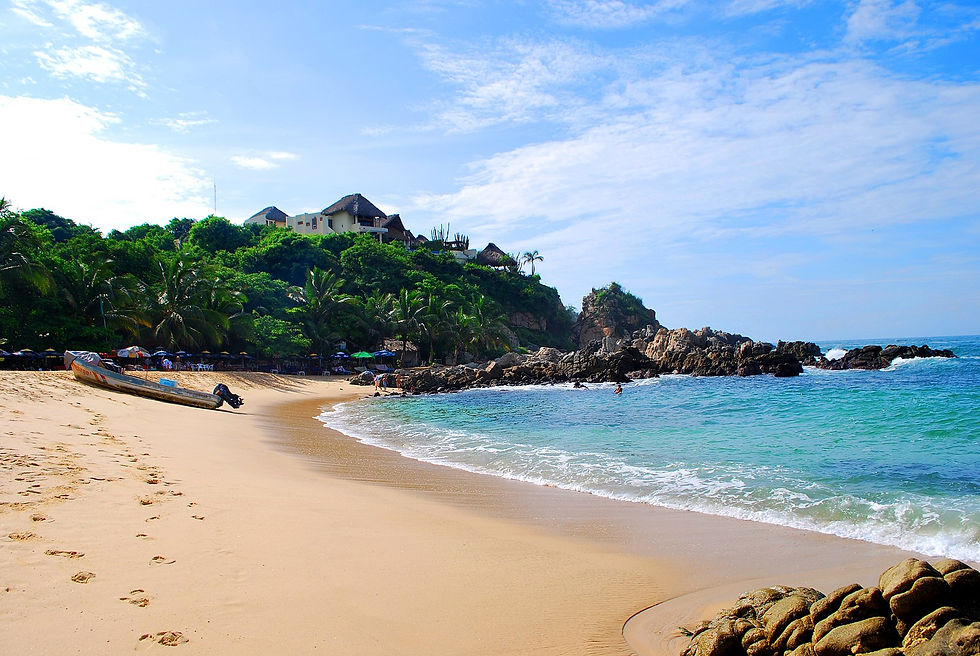
There you have it! These are 10 of the best places located in Mexico, perfect for your next adventure in July! Whether you plan to do a road trip around Mexico in July or are visiting for a long weekend, you should definitely check out some of these places!
When exploring these hidden gems, always consider hiring a guide or joining a tour group, as some locations may require local expertise for the best experience.
Did you know we have a Hidden Gem Finder on our website? This handy little map shows over 13,000 hidden gems across the entire world with their exact co-ordinates available to view on Google Maps as well as an image/description for each one!









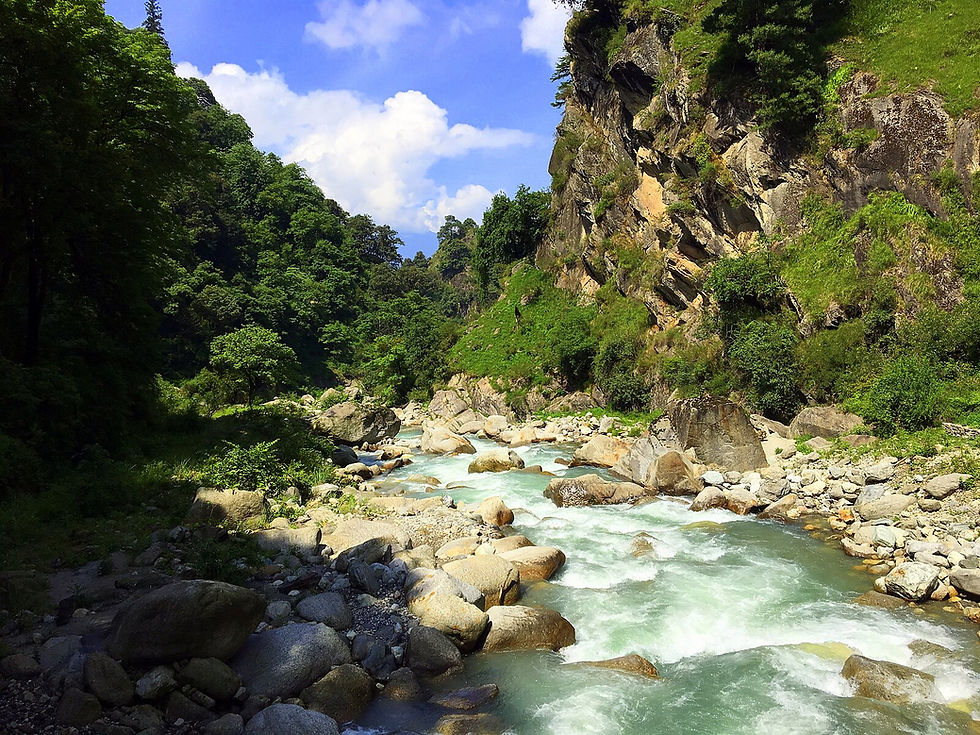


Comments